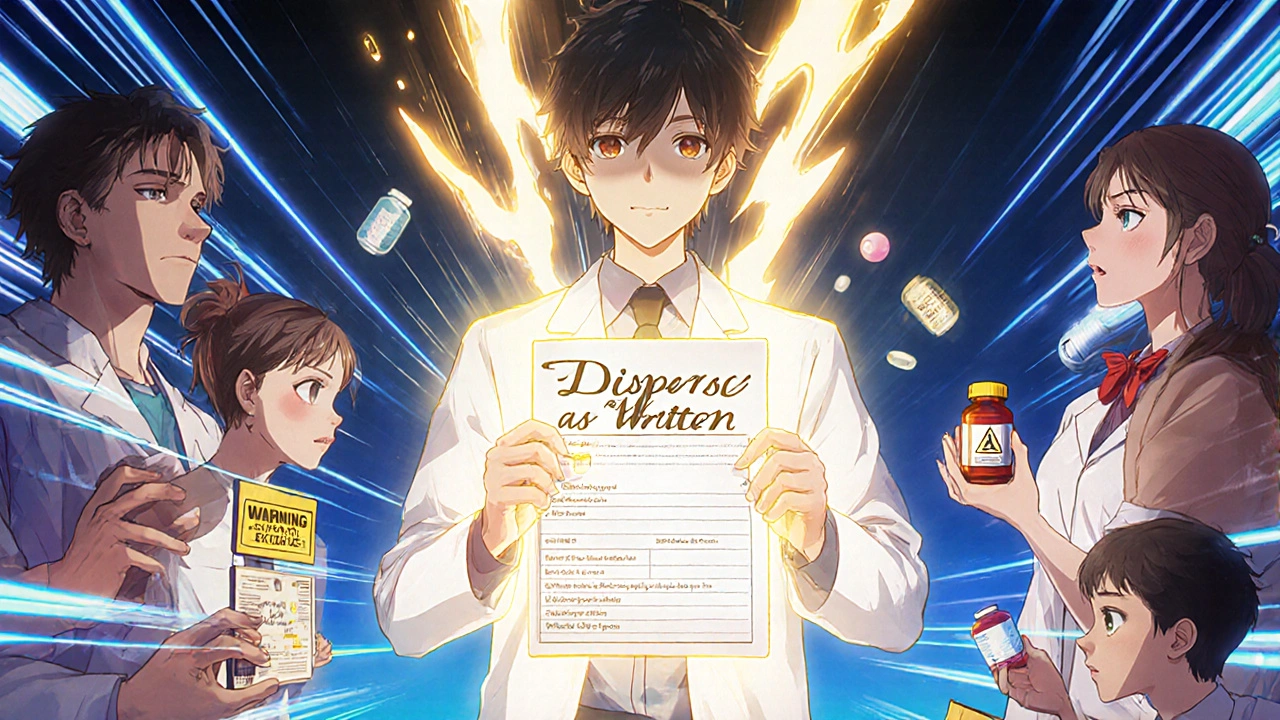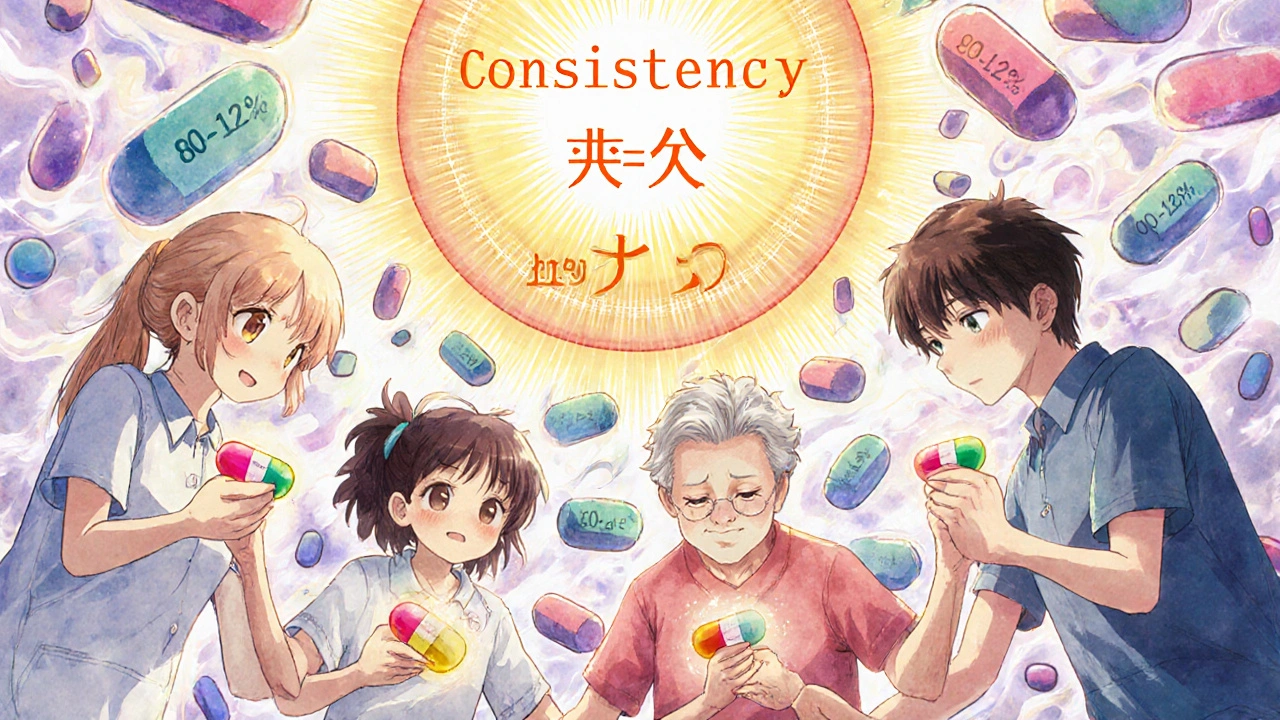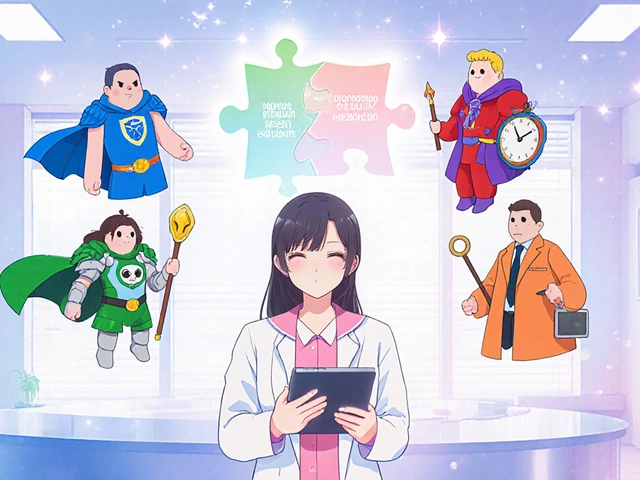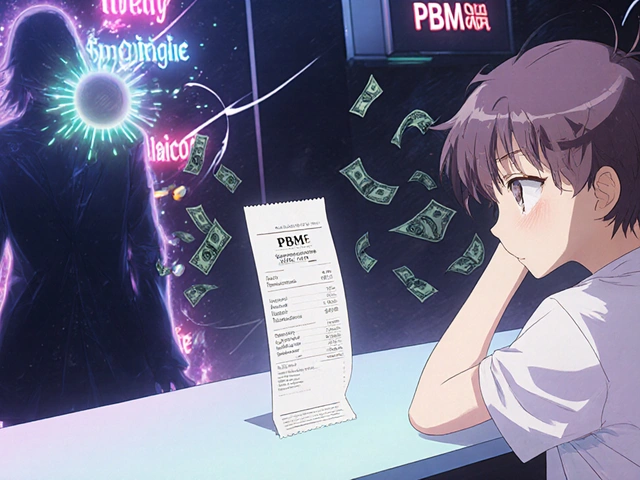Why switching your antiseizure medication might be riskier than you think
Imagine being seizure-free for five years. Then, your pharmacy switches your Lamictal to a generic version. Two weeks later, you have three seizures in a row. This isn’t a rare story. It’s happening to people across the U.S., Australia, and beyond. The problem? Many antiseizure medications are NTI drugs-narrow therapeutic index drugs. That means the difference between a safe dose and a dangerous one is tiny. Even small changes in how your body absorbs the drug can throw off your entire treatment.
The FDA says generics are just as good as brand-name drugs. And technically, they’re right. By law, a generic antiseizure medication must deliver the same active ingredient in the same amount, within 80-125% of the brand’s blood concentration. Sounds fair, right? But here’s the catch: for drugs like lamotrigine, carbamazepine, and valproic acid, that 25% window is wide enough to cause real problems. A 15% drop in blood levels might mean a breakthrough seizure. A 15% spike could mean dizziness, rash, or even liver damage.
What makes antiseizure meds different from other generics?
Most medications-like antibiotics or blood pressure pills-have a wide safety margin. Take a little more? You might feel a little sleepy. Take a little less? You’ll still be okay. Not so with antiseizure drugs. Their therapeutic window is razor-thin. That’s why experts call them NTI drugs. The World Health Organization lists carbamazepine, phenobarbital, and valproic acid as essential medicines, but also flags them as high-risk for substitution issues.
Extended-release versions are especially tricky. Brand-name drugs like Lamictal XR or Tegretol XR are designed to release the drug slowly over 12 or 24 hours. Generic versions might meet the FDA’s bioequivalence standards, but their release profiles can vary. One study found that even when average blood levels matched, some generics spiked faster or dropped quicker than the brand. For someone with epilepsy, that’s like driving a car with a shaky gas pedal-sometimes you’re accelerating without meaning to, other times you’re coasting when you need power.
What the data really shows
The FDA claims there’s no evidence that switching to generics increases seizure risk. But real-world data tells a different story. A 2008 study in Neurology found that patients switched to generic lamotrigine had 23% more doctor visits and 18% more hospital stays than those who stayed on the brand. A 2022 global survey of over 1,200 doctors found that 40% had seen patients experience more seizures after a generic switch. In one Australian clinic, 1 in 5 patients who changed generics reported new side effects within two weeks.
And it’s not just doctors. Patients are speaking up. On forums like Reddit’s r/epilepsy, hundreds of posts describe the same pattern: stable for years, then a pill change-different color, different shape, different manufacturer-and suddenly, anxiety spikes, seizures return, or rashes appear. One user wrote: "I didn’t have a seizure in two years. Then my pharmacy switched me. I had my first one the next week. I think the anxiety of not knowing if I had the right pill triggered it."
Even more telling: switchback rates. When patients are switched from generic back to brand-name antiseizure meds, it happens at more than double the rate compared to other drug classes. In one Johns Hopkins study, 27% of patients on generic ASMs ended up switching back to brand-compared to just 12% for other medications. That’s not just preference. That’s a red flag.

Who’s most at risk?
Not everyone needs to avoid generics. But certain people are far more vulnerable:
- Those with frequent or hard-to-control seizures
- Patients on multiple antiseizure drugs (polytherapy)
- People with cognitive issues or memory problems
- Children and older adults
- Those who get seizures triggered by stress or anxiety
- People on the ketogenic diet (some generics contain hidden carbs in fillers)
For these groups, consistency isn’t just helpful-it’s critical. A change in pill appearance can cause confusion. A new filler ingredient can disrupt metabolism. Even the psychological stress of wondering if you’re taking the right pill can be enough to trigger a seizure in someone already on edge.
What doctors and pharmacists aren’t telling you
Most general practitioners don’t get trained on the nuances of NTI drugs. A 2022 survey found that 78% of neurologists felt underprepared to advise patients on generic substitution. Pharmacists, meanwhile, are often pressured to switch to the cheapest option-especially under Medicaid or private insurance plans.
The American Epilepsy Society and the Epilepsy Foundation both agree: generic substitution is fine for low-risk patients. But they strongly recommend that neurologists write "Do Not Substitute" or "Dispense as Written" on prescriptions for high-risk cases. Yet, many patients don’t know they can ask for this. Many don’t even realize their medication was switched.
Here’s the reality: pharmacies can legally swap generics unless the doctor specifically blocks it. And in many states, pharmacists aren’t required to tell you they made a switch. You might walk out with a different-looking pill and never know.

Best practices: How to protect yourself
If you take antiseizure meds, here’s what you need to do:
- Ask your neurologist if your medication is high-risk for substitution. If you have frequent seizures, are on multiple drugs, or have other health issues, insist on "Dispense as Written" on your prescription.
- Check your pill every time you fill a prescription. If the color, shape, or imprint changes, ask the pharmacist why. Don’t assume it’s the same drug.
- Keep a seizure diary. Note any changes in seizure frequency, side effects, or mood after a switch. Bring this to your neurologist.
- Know your rights. In Australia and many U.S. states, you can request the brand-name drug even if it costs more. Some insurance plans have exceptions for NTI drugs.
- Use the same pharmacy. Chain pharmacies often switch suppliers. A local pharmacy is more likely to keep your medication consistent.
- Join a patient group. The Epilepsy Foundation and ILAE have resources and advocacy tools to help you push back against unsafe substitutions.
What’s changing-and what’s next
The FDA is now considering tighter bioequivalence standards for NTI drugs, possibly narrowing the acceptable range from 80-125% to 90-111%. That’s a step in the right direction. But it’s still not enough. The real solution isn’t just better standards-it’s better communication.
Specialized epilepsy centers already know this. They keep patients on the same brand for years. They track every change. They don’t gamble with seizure control. Community pharmacies? They’re under pressure to cut costs. That’s why the gap between clinical reality and pharmacy practice keeps growing.
Looking ahead, precision medicine is changing epilepsy care. Newer drugs like cenobamate and fenfluramine have complex absorption patterns. For these, generic substitution may not even be feasible. The future of epilepsy treatment isn’t about saving a few dollars on a pill. It’s about matching the right drug, at the right dose, with the right consistency-for each individual.
Bottom line: Your seizures matter more than the price tag
Generic drugs save billions. That’s important. But when it comes to antiseizure medications, the cost of a mistake isn’t just financial-it’s neurological. A single uncontrolled seizure can lead to injury, hospitalization, or even sudden death. That’s why consistency matters more than cost.
If you’re stable, don’t risk it. If you’ve had a bad experience after a switch, speak up. Talk to your neurologist. Ask for your prescription to be marked "Dispense as Written." If your pharmacy pushes back, ask to speak to the pharmacist-in-charge. You have the right to know what you’re taking-and to choose what keeps you safe.
There’s no one-size-fits-all answer. But for thousands of people with epilepsy, the safest choice isn’t the cheapest one. It’s the one they’ve been on for years. And sometimes, that’s worth paying extra for.
Can I switch from brand-name to generic antiseizure medication safely?
For some people, yes-but not without caution. If you’ve been seizure-free for over a year, have no other health conditions, and take only one antiseizure drug, switching might be low-risk. But if you have frequent seizures, take multiple medications, or are elderly, a child, or have cognitive issues, the risks outweigh the savings. Always talk to your neurologist before switching.
Why do generics sometimes cause more seizures?
Even though generics meet FDA bioequivalence standards, they can differ in how quickly they’re absorbed or how they’re released over time. For antiseizure drugs with a narrow therapeutic window, even small changes in blood levels-like a 10-15% drop-can trigger seizures. Fillers, coatings, and manufacturing differences can also affect absorption, especially with extended-release versions.
What should I do if my pharmacy switches my medication without telling me?
Check your pill immediately. If it looks different, call your pharmacy and ask if the manufacturer changed. Then contact your neurologist. Document any new symptoms or seizures. You have the right to request your original medication. Ask your doctor to write "Dispense as Written" or "Do Not Substitute" on your prescription to prevent future switches.
Are there legal ways to stop a generic substitution?
Yes. In Australia and most U.S. states, your doctor can write "Dispense as Written" or "Do Not Substitute" on your prescription. This legally prevents the pharmacy from switching to a generic unless you or your doctor approves it. Some insurance plans also allow exceptions for NTI drugs if you provide documentation from your neurologist.
Which antiseizure medications are most likely to cause problems with generics?
The highest-risk drugs are lamotrigine, carbamazepine, phenytoin, valproic acid, and phenobarbital. These are all narrow therapeutic index drugs, meaning small changes in blood levels can lead to loss of seizure control or toxicity. Extended-release versions of these drugs are especially sensitive to formulation differences.
How can I tell if my generic is from a different manufacturer?
Check the pill’s shape, color, and imprint code. These are unique to each manufacturer. If they change, even slightly, ask your pharmacist for the name of the manufacturer. You can also look up the pill on a reliable database like Drugs.com or the FDA’s National Drug Code Directory. Never assume a different-looking pill is the same.
Is it safe to use generics in developing countries?
In countries with weak regulatory oversight, generic antiseizure medications may be substandard or counterfeit. A global survey found that in low-resource settings, inconsistent quality and poor manufacturing are major barriers to safe generic use. If you’re in this situation, prioritize access to any effective medication-but if possible, seek out medications from trusted suppliers or international aid programs that verify quality.






Rachel Wusowicz
November 15, 2025 at 15:36
Okay, so let me get this straight: the FDA says generics are "just as good," but they’re allowing a 25% swing in blood concentration for drugs that can literally kill you if you’re off by 5%? That’s not science-that’s a lottery. And now they’re telling us to trust a pill because it has the same active ingredient? What about the fillers? The coatings? The binders that might be laced with gluten or soy or whatever else is cheapest that week? I’ve seen people go from zero seizures to three in a week after a "switch." And no one even told them it happened. This isn’t healthcare. This is corporate roulette with your brain as the wheel.